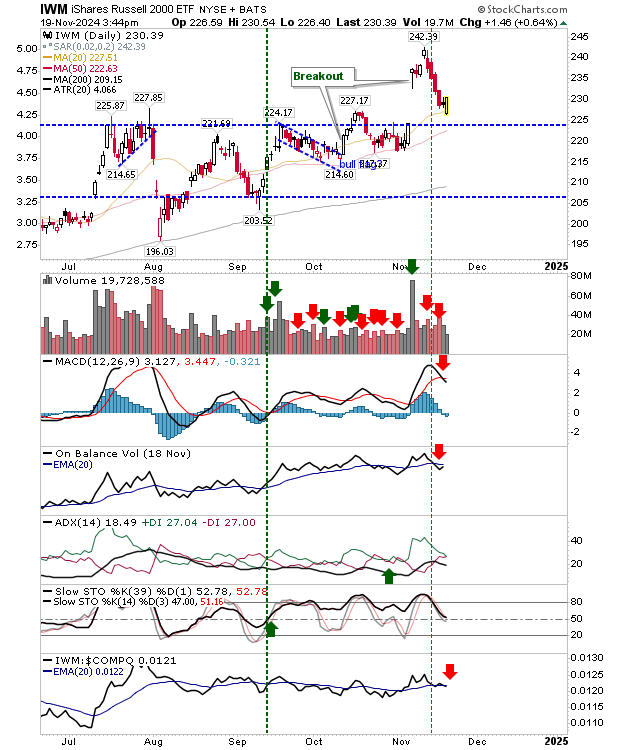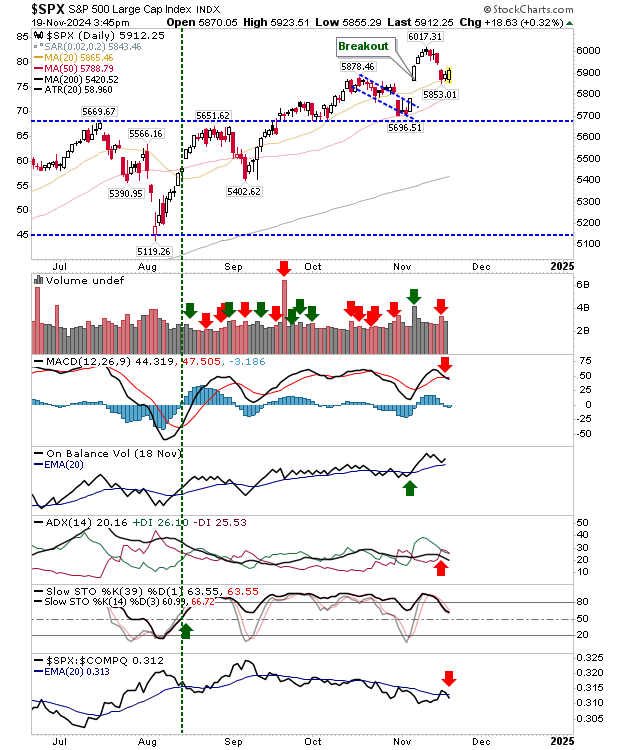After days of selling triggered by escalating events in Ukraine there was at least a modicum of relief for markets as buyers stepped in at 20-day MAs across lead indices. Because of this, breakout gaps remain intact and markets have the opportunity to return to their highs.
Risk:reward can be worked off the lows (lowest low of the last 3 days). Those of a bearish persuasion may view recent gaps as potential "island reversals", but if these prove true, then such overhead gaps can't close.
The Russell 2000 (IWM) had produced the biggest breakout gap, but also suffered the hardest selling post-election. Today's defense of the 20-day MA come with prior 'sell' triggers in the MACD (a weak signal from above the bullish zero line), and On-Balance-Volume.
There remains an ongoing battle between Small Caps and Nasdaq in the relative performance stakes and this hasn't been resolved in favor of one or the other.
The S&P 500 is holding the breakout gap from the 'bull flag'. Unlike the Russell 2000, the index enjoys a bullish accumulation trend in On-Balance-Volume, although has existing 'sell' triggers in +DI/-DI and MACD and is underpeforming relative to the Nasdaq, despite the troubles in the latter index.

The Nasdaq has continued to defend breakout support with the help of the 20-day MA. It was the only index to record an accumulation day at support. The index was in the process of accelerating its relative performance advantage over the S&P until the election blip, but it may be kicking off again in the Nasdaq's favor. As for other indices, it has a 'sell' trigger in the MACD to overcome.
Despite the good news, we still have to watch the Semiconductor Index and its breakdown.

There are two things to watch. What the Semiconductor Index does once it makes its way back to former wedge support and convering moving averages? And if lead indices can build on today's successful support tests.
